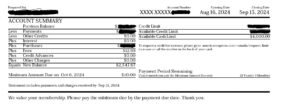Looking for ways to speed up loan repayment and save on interest? Here are ten (10) simple ways to pay off your loan faster and save big on interest in the long run. Whether it’s student loans, a mortgage, or credit card debt, these small changes can make a big difference in getting you closer to financial freedom.
Let’s face it—loan repayment can feel like a never-ending task, especially with interest piling up. But there’s good news: with a few innovative strategies, you can take back control and pay off your loans faster while saving on interest. This guide breaks down 10 straightforward tips for applying to any loan, whether your mortgage, student debt, or credit card balance, helping you save money and get debt-free sooner.
1. Pay a Little Extra When You Can
Every time you make an extra payment—even if it’s just $20 or $50—it chips away at the interest you owe and shortens the life of your loan.
Let’s say you’ve got a $200,000 mortgage at 4%. An extra $100 each month could save you more than $30,000 in interest and cut four years off your loan! Extra payments can make a huge difference even with credit card debt or student loans, which often have higher interest rates.
The best part? Every extra dollar you put in goes directly toward your principal, meaning less interest to pay over time. Even small amounts can add up and speed up your repayment. Check out our Loan payoff calculator and see for yourself!
Loan Pay-off Calculator
Without Extra Payments
With Extra Payments
It assumes a fixed interest rate and consistent extra payments throughout the loan term.
Actual loan terms may vary. Please consult with a financial advisor for personalized advice.
2. Tackle High-Interest Debt First
High-interest loans, like those pesky credit cards, can be a real drain on your finances. Some credit cards charge interest rates over 20%! It makes sense to knock those out first.
The “debt avalanche” method is a smart way to handle multiple debts:
- List your debts and the highest interest rate first, regardless of the balance.
- Pay the minimum on all your debts.
- Throw any extra cash toward the loan with the highest interest.
- Once that’s paid off, move to the next highest-interest-bearing loan, and repeat.
For instance, if you have a $5,000 credit card balance at 22% and a $10,000 personal loan at 10%, it’s better to focus on the credit card first; even though the balance is smaller, pay any extra to this loan—you’ll save more in the long run.
3. Refinance for a Better Deal
Refinancing basically means swapping out your current loan for a new one with better terms, like a lower interest rate or shorter repayment period. This can be especially helpful for mortgages or student loans.
For example, if you have a $200,000 mortgage at 5% and you refinance to 3.5%, you could save over $60,000 in interest. Even with student loans, cutting the interest rate from 7% to 5% on a $30,000 loan can save you thousands. Try the loan calculator to see for yourself.
To get the best refinancing deal:
– Check your credit score (and work on improving it if needed).
– Shop around and compare rates from different lenders.
– Watch out for fees, and calculate how long it will take for refinancing to pay off.
4. Consolidate Loans to Keep Things Simple
Loan consolidation means combining several loans into one, which can make things easier to manage. You’ll only have one payment to worry about, and you might be able to lower your interest rate if you’re consolidating high-interest debt. Sometimes, consolidation helps to extend the repayment period, which can decrease monthly payments but might increase the total amount of interest paid.
Pros:
– Simplifies your payments.
– Could lower your monthly payment or interest rate.
Cons:
– Might stretch out the loan term, meaning you could pay more interest overall.
– There may be fees.
For instance, if you’re juggling $15,000 in credit card debt with an average 18% interest rate, consolidating into a personal loan with a 10% rate could save you a lot in the long run.
5. Use Bonus Money to Pay Down Debt
Got a tax refund, work bonus, or birthday gift? Instead of spending it, try putting it toward your loans. It might not be the most exciting option, but it’s a great way to make a severe dent in your debt.
For example, using a $1,000 tax refund to pay down a $200,000 mortgage at 4% could save you over $3,000 in interest and shorten the loan by a few months! The effect is even bigger with high-interest debts like credit cards.
6. Set Up Automatic Payments
Setting up automatic payments is a simple way to avoid late fees and make sure you never miss a payment. Some lenders even offer a small discount on your interest rate if you enroll in autopay, which can add up over time. This is by far the most powerful method that has worked for me and I do not have to think about it. This is one of the features why I continue to recommend WealthSimple.
For example, if you’re paying off a $30,000 student loan at 6%, a 0.25% autopay discount could save you over $450 over the life of the loan—not bad for something you can set up once and forget!
7. Round Up Your Payments
Rounding up your payments to the nearest $50 or $100 is a super easy way to pay a little extra without thinking too much about it. Reach out to your financial provider to see if this option is available to you.
If your mortgage payment is $1,340, rounding up to $1,400 means an extra $60 goes toward your principal each month. Over time, that extra bit can save you thousands in interest and knock years off your loan.
It’s an easy win, and once you set it up, you probably won’t even notice it in your budget.
8. Adjust Your Budget to Free Up Extra Cash
Take a good, hard look at your budget and find areas where you can cut back. Then, funnel that extra money toward your loans.
Here’s how:
- Track your spending for a month.
- Break it down into categories (housing, food, fun stuff).
- Identify non-essentials you can reduce.
- Set a specific goal for how much extra you’ll put toward your loans.
If you’re spending $400 a month on eating out and subscriptions, cutting that in half and using the $200 savings to pay down your debt could make a huge difference. For example, on a $30,000 student loan at 6%, an extra $200 a month could help you pay it off 5 years sooner and save over $5,000 in interest.
9. Look Into Loan Forgiveness Programs
Depending on your job or loan type, you might qualify for loan forgiveness or assistance programs, especially if you have student loans.
For example:
– Public Service Loan Forgiveness (PSLF) for government or non-profit workers.
– Teacher Loan Forgiveness for educators in low-income schools.
– Income-driven repayment plans that offer forgiveness after 20-25 years.
It’s worth researching what’s available and reaching out to your loan servicer to see if you qualify. Even partial forgiveness can make a big difference!
10. Use a Loan Payoff Calculator to Stay Motivated
Online loan payoff calculators are a great way to visualize your progress and see how different strategies—like making extra payments or refinancing—affect your loan.
Just plug in your loan details, and play around with the numbers to see how small changes can lead to big savings. Many sites, like Bankrate or Student Loan Hero, offer free calculators that make it easy to stay on track.
Conclusion
Paying off your loans faster doesn’t have to be complicated. With these 10 tips, you can take action today to start saving on interest and shorten your loan repayment. Start with something simple—like setting up autopay or making a small extra payment—and you’ll see how quickly those tiny steps add up.
Share this guide with anyone who could use a hand with their loans, and take the first step toward financial freedom today!
## Call-to-Action
Ready to get started? Automate your payments, make a small extra payment, or even just round up today—and watch how fast you start saving! And don’t forget to share this guide with others who are looking to tackle their debt.




